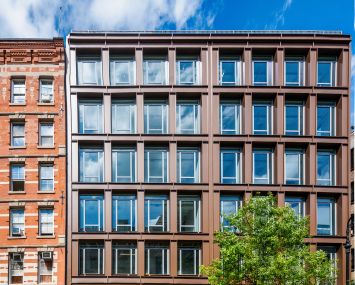A healthy chunk of our business comes from clients we’ve worked with before, though we’re hardly an anomaly. I know this from talking with my entrepreneur friends and others in the architecture industry. Let’s face it: What you do today has everything to do with how your business will fare tomorrow. However, even with a solid relationship and a project that seems to have run well, when it comes to callbacks, I’ve learned to never take repeat business for granted.
It’s incredible what sticks in the mind of a client one year, two years or even five or 10 years later as leases expire or a client is ready to expand or downsize. There are many factors that account for who will get the phone call come bid time. If a broker, tenant, building owner or real estate attorney feels you’ve done quality work for them, you’re probably going to be programmed in their cell phone and asked to take on the next job and maybe even the one after that. Better yet, they’ll refer you to others who might be in the market for your expertise. So how can you make sure your name is in the “contacts” list?
I’ve found that good, timeless design, the kind that stands the test of time, makes clients feel comfortable investing in a project with us. That’s not to say that we ignore the trends—we just don’t push them on a client if it’s not the right fit. Long after a client has settled into a new space, they remember how you made them feel. They need to “live” in the new facility, so whether it suits them a few years from now matters even more long after you’ve left the site. That’s where trust comes into play. This business is all about relationships, and clients need to know they can come to you or the lead designer, project manager or architect and get honest, helpful advice.
And in this day and age of cost-cutting, let’s not forget pricing. Value for the dollar is definitely a consideration, and you can’t expect anyone to want to work with you if your pricing is not on par with that of your competition.
When it comes to repeat business, responsiveness is also a key factor. Did you promptly jump in when there were smaller additions or changes to be made? Were you willing to help out if the project was large or small? It’s the extra mile you’re willing to go that cements a relationship that makes you someone the client wants to call for “day two work” years down the road.
Also not to be underestimated is the importance of simply staying in touch. It can be as simple as phoning a client after attending a panel discussion to share something that you think might be of interest to them or to their business or proactively forwarding an article on a trend that you think they ought to know about. It doesn’t even need to be design-related. Remember, clients are people too, and, while LinkedIn and other social media are valuable ways to stay interconnected, nothing can substitute for a good old-fashioned personal relationship. In many instances, a business relationship becomes a friendship, and you become an integral part of that person’s network. Essentially, being front of face (and not in an annoying kind of way) leads to being top of mind.
Last, but certainly not least, the biggest issue architects cite—and that matters most to many of their clients—is the way they close out a project. Filing paperwork, submitting work to building ownership and all of the other punch list items left for last linger in the client’s memory long after you’ve left. No client wants to be stuck closing out a project themselves, and, believe me, they remember if you weren’t there to help. It’s not just a nice touch to check back in after a project has been physically completed and then continuing to do so periodically; it’s a must if you want to be considered for the client’s next project.
So if you do all of these things, is repeat business a given? Absolutely not! These days, no one can be that complacent. Real estate brokers know that projects are bid and rebid in a quest for the best value, best pricing and best record of workmanship across the board. Just having a past relationship is simply not enough. That’s why we treat each project, even if it’s someone we’ve worked with before, as if we’re going after their business for the very first time. In summary, we do the job as best as we can, stay in touch and, no matter what, never take a callback for granted.


